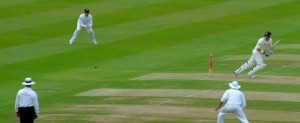In the past this site has featured some lighter, colloquial
blog posts. These articles discuss issues related to the
greater physiotherapy community. Thus, I present a few mantras
I have heard, adapted or made up for the physios to live by in
the coming year.
Radial tunnel syndrome is rare, it is challenging to
differentially diagnose and can be a monster to manage. If you
have a recalcitrant case of tennis elbow then this post will
interest you! This article discusses the best available
evidence for assessment and management of radial tunnel
syndrome.
Have you ever heard of snapping scapula syndrome? If you
answered no, I would not be too surprised. Whilst this
condition is more common than you may think, it seems to be
underappreciated within the physiotherapy. Thus, this article
will discuss snapping scapula syndrome including what it is,
why it occurs and what you need to do to fix it!
Ankle sprains are very common in the practice of sports
physiotherapy. However, unfortunately many patients go on to
have long term problems. This has lead to the development of
many proposed treatments and rehabilitation programs. This
article will discuss new research into the use of manual
therapy techniques combined with exercises for the
rehabilitation of inversion ankle sprains.
As a sports physiotherapist, it is important that you not only
rehabilitate athletes but ensure that they are fully fit to
return to play. As many of you are fully aware, objective
measures such us a full active range of motion does not
determine an athlete’s readiness to RTP. Accordingly, a
comprehensive assessment of an athlete’s function, via
functional performance testing, becomes an absolute assessment
necessity. This article will discuss current research on the
the role and implementation of functional performance testing,
as well as some tests that you may use in your own clinical
practice.
In This Episode In this episode of the podcast I continue the
interview with Paul Wright. In Part 2, of the interview we
discuss: The 4 most successful and easy to implement external
marketing strategies How to overcome barriers to implementing
these successful strategies 5 of Paul’s business
failures and what he learnt from them Why […]

TSP011: Health Business Success with Paul Wright (Part
2)
[ 28:45 ]
Play Now
|
Play in Popup
|
Download
In this episode of the podcast I interview Paul Wright. Paul
Wright is a physiotherapist and business consultant. He
graduated from his first degree, as a Physical Education
teacher, in 1987 and then graduated as a physiotherapist in
1990. He has also completed an Advanced Diploma in Business
Management. Paul has opened multiple multi-disciplinary health
clinic and has been actively involved in clinical education
around the world having lectured to over 20,000 health
professionals…

TSP010: Health Business Success with Paul Wright (Part
1)
[ 45:04 ]
Play Now
|
Play in Popup
|
Download
Introduction Sports physiotherapists regularly assess and
treat shoulder pathologies. In my clinical practice, shoulders
would place in the top 3 most common conditions (along with
back and knee presentations). Given the frequency with which
we see these problems, there is much interest in the best
assessment and rehabilitation techniques for shoulder
problems. This article will […]
Aerobic exercise, particularly in the form of running, has
become more popular with the general population over the last
few decades. Unfortunately, this increase in healthy exercise
may come at a cost with up to 80% of runners reporting a lower
limb injury. These trends mean that preventing running
injuries is gaining significant importance in the world of
sports medicine. One touted intervention that is currently in
vogue is adapting the runner’s biomechanics to a
forefoot strike pattern or barefoot running technique…
Introduction Hamstring strains are commonly assessed and
treated in the world of sports physiotherapy. They represent
the most common injury in a number of sports, including AFL
and soccer, accounting for up to 12-16% of injuries (Hawkins
et al., 2001; Warren et al., 2010). Dvorak and Astrid (2000)
suggested that hamstring injuries occur at an […]
In the past this site has featured some lighter, colloquial
blog posts. These articles discuss issues related to the
greater physiotherapy community. Thus, I present a few
mantras I have heard, adapted or made up for the physios to
live by in the coming year.
Radial tunnel syndrome is rare, it is challenging to
differentially diagnose and can be a monster to manage. If
you have a recalcitrant case of tennis elbow then this post
will interest you! This article discusses the best available
evidence for assessment and management of radial tunnel
syndrome.








